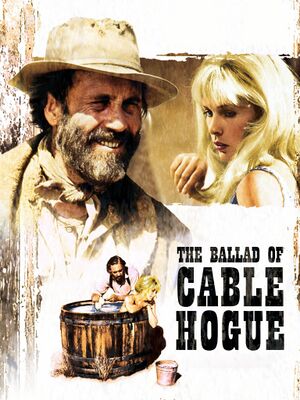| The Ballad of Cable Hogue
|
|
The Ballad of Cable Hogue (1970)
|
| Country
|
 United States United States
|
| Directed by
|
Sam Peckinpah
|
| Release Date
|
1970
|
| Language
|
English
|
| Studio
|
Warner Bros Pictures
|
| Distributor
|
Warner Bros
|
|
|
The Ballad of Cable Hogue is a 1970 American drama comedy Western film directed by Sam Peckinpah and starring Jason Robards, Stella Stevens, and David Warner.
In 1905, four days after being abandoned in the Arizona desert by his partners, prospector Cable Hogue miraculously finds a water reserve that turns out to be the only source of water between two towns, seeing the possibility of making a good deal but also of getting revenge on his old partners.
Unlike many of his other Westerns, Sam Peckinpah decided to make a less violent and more sentimental vision of the American western, which resulted in one of his best and most iconic films.
The following weapons were used in the film The Ballad of Cable Hogue:
Revolvers
Colt Single Action Army
The "first customer" (presumably Darwin Lamb) uses a Colt Single Action Army to try to attack Cable Hogue for not wanting to pay 50 cents. SAA revolvers are also used by Taggart (L.Q. Jones) and Bowen (Strother Martin), Cable's former partners who abandoned him in the desert at the beginning of the film.
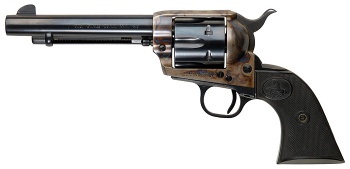
Colt 1873 Single Action Army w/ 5.5" barrel - .45 Long Colt
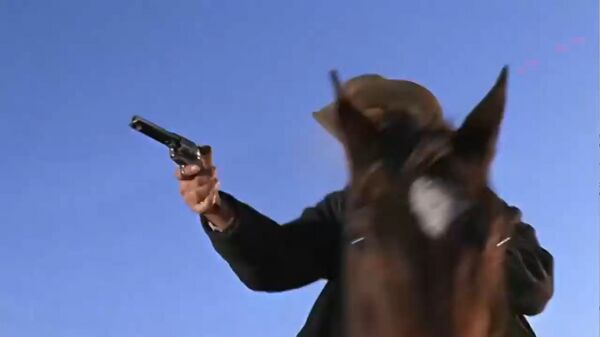
The "first customer" draws out his Colt Single Action Army to try to shoot Cable Hogue, all because he didn't want to pay 50 cents for the water he drank.
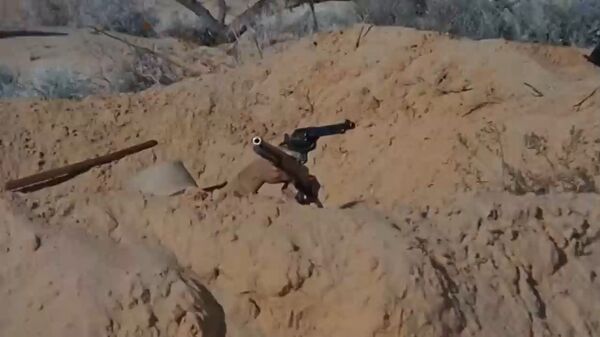
From a hole in the ground, Taggart and Bowen fire their weapons in hopes that one of them will hit Cable Hogue.
Rifles
Winchester Model 1892
Throughout the film, the most used weapon is the Winchester Model 1892, used mainly by Cable Hogue (Jason Robards) to defend his property and business.

Winchester Model 1892 - .32-20 WCF
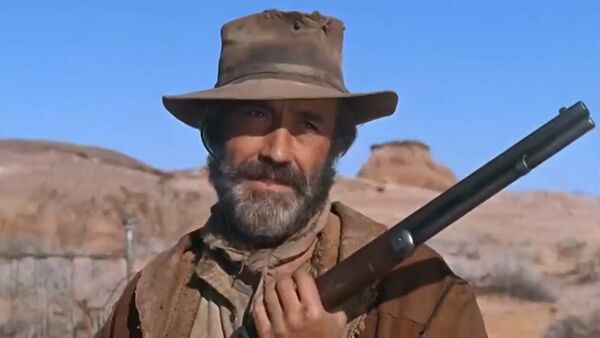
A close-up of the top of the new Winchester Model 1892 that Cable Hogue took from the person who did not pay him the 50 cents. It was the least that he could do as a form of payment.
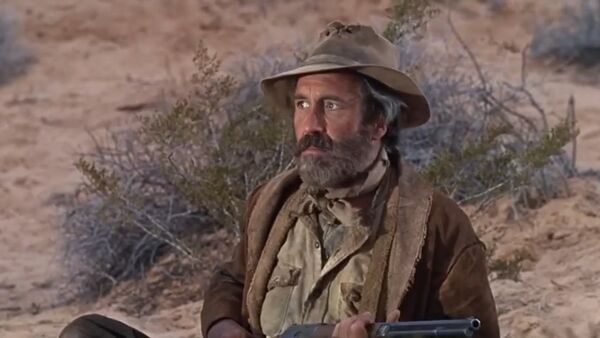
Cable Hogue holds his Winchester Model 1892 as he talks to Reverend Duncan, and the latter reminds him that he must go to the post office to legally own the land.
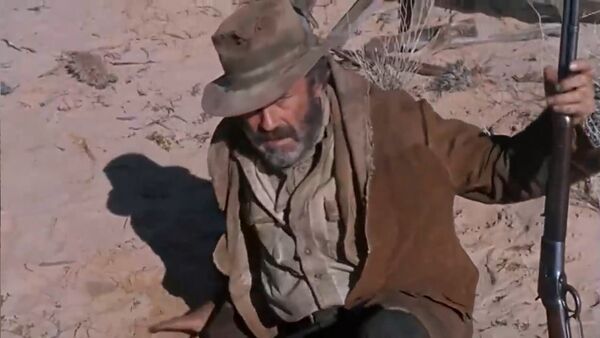
Cable Hogue uses the Winchester Model 1892 to stand up and point the rifle at the reverend.
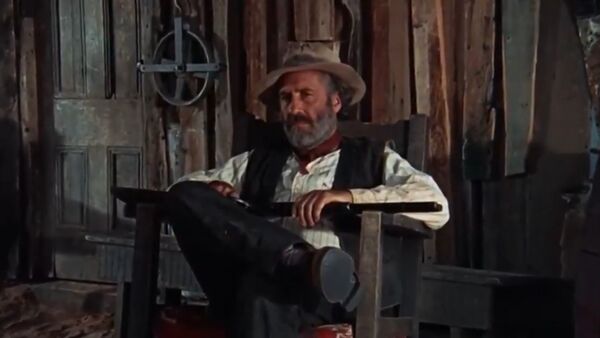
Cable Hogue with his Winchester Model 1892 as he watches his former partners arrive at his property. Hogue knew they were coming and he isn't sure what to do with them.

Winchester Model 1892 w/ 24" barrel - .38-40 WCF
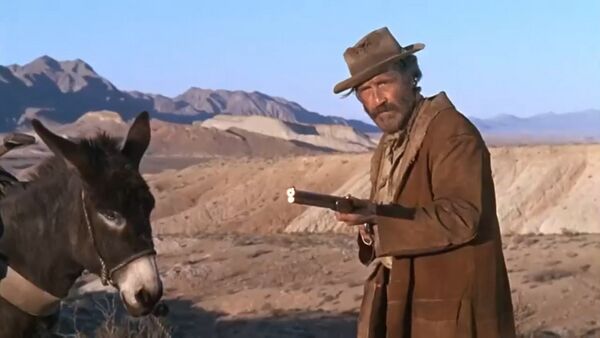
Taking advantage of the fact that his companions are not paying attention to him, Cable draws a Winchester Model 1892 from his horse's saddle.
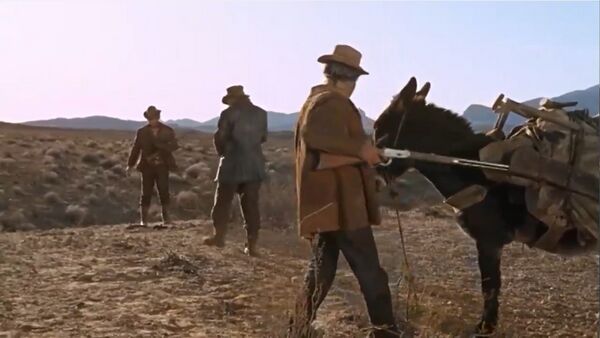
Cable point his Winchester Model 1892 at Taggart and Bowen.
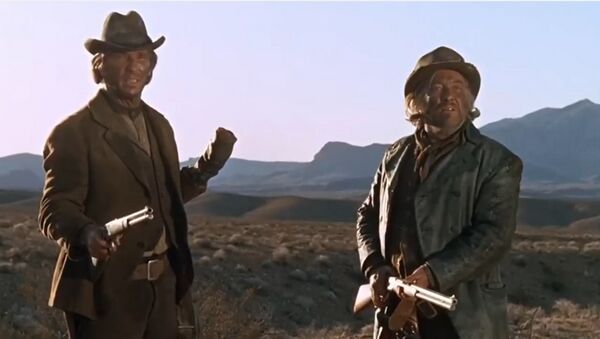
After being threatened, Taggart and Bowen say it was all a bad joke so Cable would let his guard down so Bowen could take the Winchester Model 1892 from him.
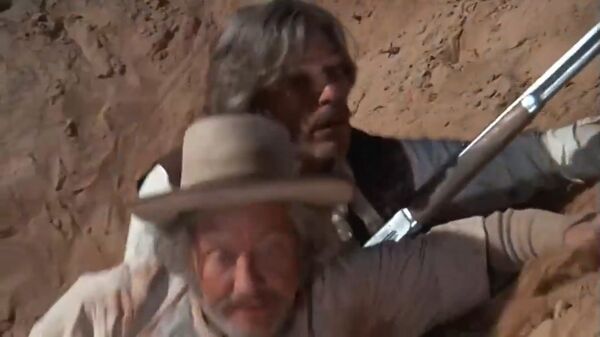
When Bowen and Taggart visit their former partner, the latter is carrying a Winchester Model 1892 with 24" barrel, presumably the one he had taken from Cable Hogue.
Winchester Model 1892 Saddle Ring Carbine
Taggart (L.Q. Jones) holds a Winchester Model 1892 carbine when he and Bowen stop searching for a water tank with Cable Hogue. This is the only appearance of the "Saddle Ring Carbine" variant in the entire film.

Winchester Model 1892 Saddle Ring Carbine - .44-40 WCF
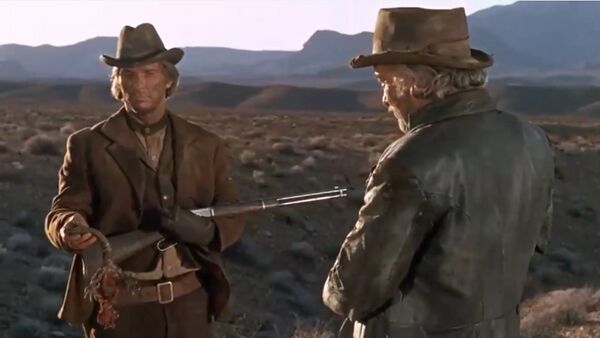
A perfect side shot of the Winchester Model 1892 Saddle Ring Carbine when Taggart holds it.
Shotguns
J. Stevens and Company Side by Side Shotgun
When Taggart (L.Q. Jones) and Bowen (Strother Martin) arrive by stagecoach in Cable Springs, the shotgun messenger is holds a J. Stevens and Company Side by Side Shotgun which he never fires or uses.

J. Stevens and Company Double-Barreled Shotgun - 12 gauge
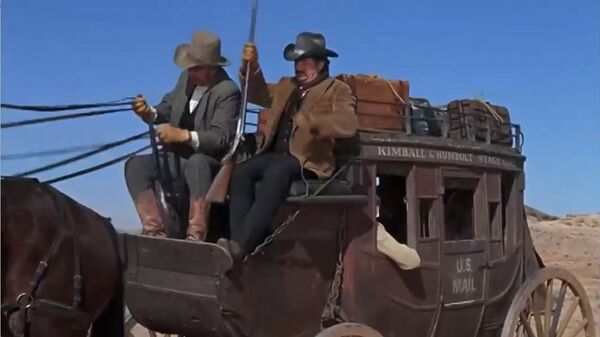
The brief appearance of the J. Stevens and Company Side by Side shotgun when Bowen stores the shotgun in his stagecoach.
Others
Registry Office Poster
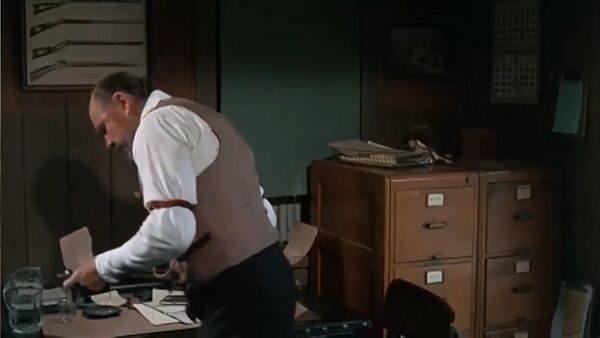
In the background of the registry office a poster with four unidentified muzzleloading rifles is seen, although it is possible that they are just drawings of generic rifles.
